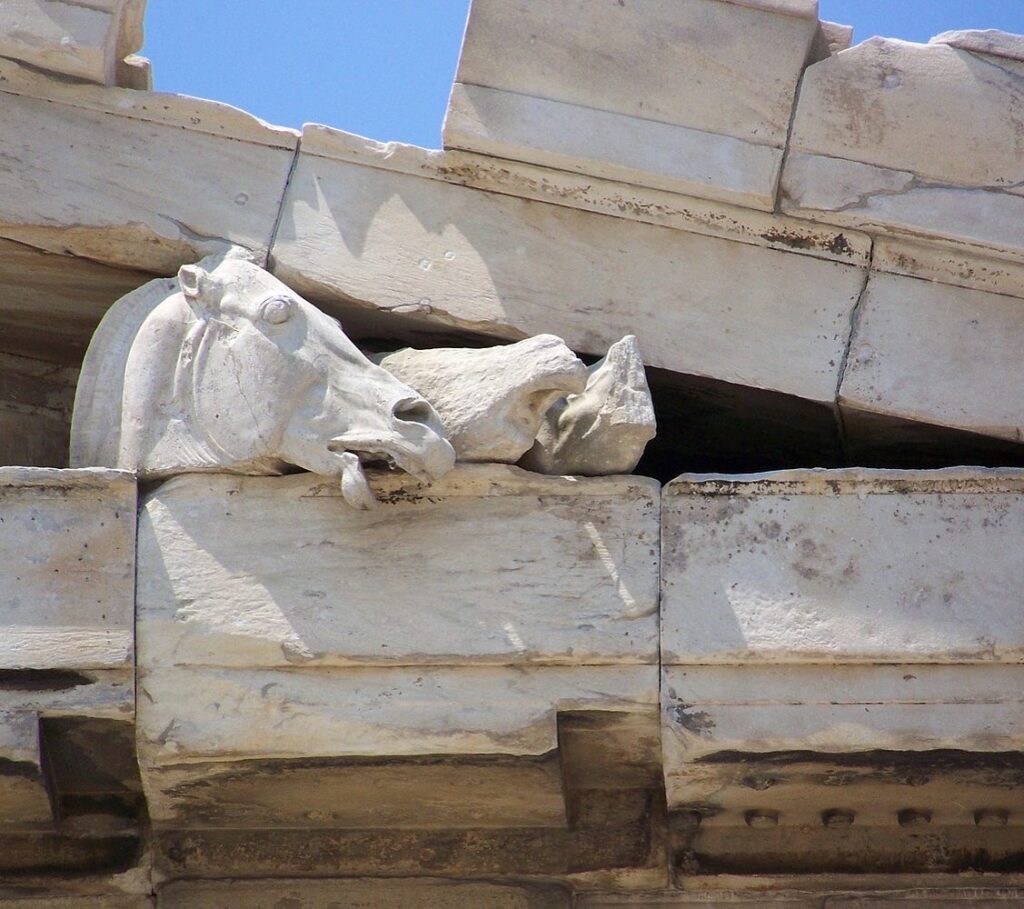With all the beautiful bodies to ogle, it is easy to overlook the extraordinary representations of animals from Classical Athens (and beyond). It is absolutely clear that ancient Greeks had far more intimate appreciation of animals than most of us do today.
I’m showing this old stalwart, the over life-sized head of a spirited horse (worn but powerful still) from the East pediment of the Parthenon. It was one of the horses that pulled the chariot of Selene (the moon), and situated at the very corner of the pediment peering outwards, nostrils flaring – not strictly necessary to the larger narrative (the Birth of Athena), but certainly enlivening the scene.


But I wish I could show a lost masterpiece, a bronze cow by Myron that was considered the Early Classical sculptor’s finest work. It showed a cow lowing, and stood on the Acropolis of Athens. It was reputedly so life-like it attracted baby cows who wished to suckle from it, bulls who wished to mate with it, and cow-rustlers who recognised a beautiful heifer when they saw one.
It is sometimes debatable whether mimesis – the concerted attempt to reproduce reality – was the goal of Greek artists. Perhaps they had to rein themselves in when sculpting gods, heroes, and citizens. But they certainly did not shy away when celebrating animals, and the detail and naturalism applied to these representations were extremely impressive and clearly prized.



